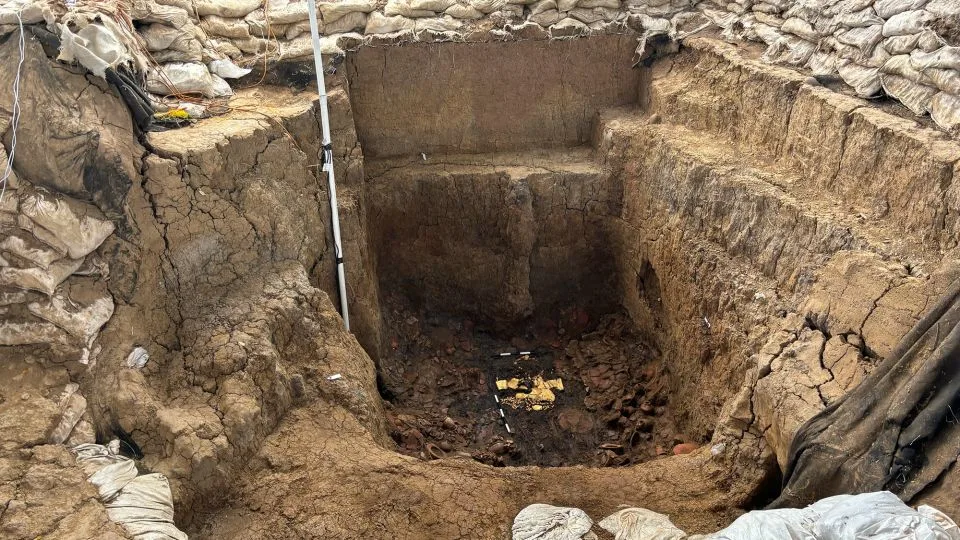Unearthing the Enigmatic Legacy of Panama's Ancient Elite: The Discovery of the Lord of the Flutes
The grave is the ninth tomb excavated by researchers at the El Caño Archaeological Park, which is known for its richness in archaeological discoveries and lavish burial chambers. - Julia Mayo/Fundación El Caño
Panama, a land rich in cultural heritage and historical intrigue, has once again captivated the world with a remarkable archaeological find. In the heart of El Caño Archaeological Park, nestled within the lush landscapes of Coclé province, lies a treasure trove of ancient mysteries waiting to be unraveled. Here, amid the whispers of a bygone era, researchers have unearthed a burial chamber that sheds new light on the enigmatic civilization that once thrived in this region.
Dating back over 1,200 years, this newly discovered tomb unveils the final resting place of a revered figure, known simply as the Lord of the Flutes. Draped in gold and surrounded by a cache of ceremonial artifacts, this ancient leader offers a glimpse into a world steeped in tradition and ritual.
Led by Dr. Julia Mayo, the excavation team from the El Caño Foundation has meticulously pieced together the story of this illustrious individual. Standing at the pinnacle of society, the Lord of the Flutes held sway over his people, guiding them through the ebb and flow of life with wisdom and reverence. Yet, his legacy transcends mere mortal deeds, as his burial chamber serves as a testament to the enduring power of belief and ceremony.
Amidst the golden adornments and sacred relics, lies evidence of a profound spiritual connection that bound the ancient inhabitants of El Caño. Animal bone flutes, intricately crafted pectorals, and ornate jewelry speak to a culture steeped in reverence for the divine. For the Lord of the Flutes was not merely a ruler but a custodian of sacred traditions, entrusted with the solemn duty of bridging the mortal realm with the divine.
Yet, his journey to the afterlife was not a solitary one. As researchers delved deeper into the tomb, they uncovered the remains of his companions, laid to rest in a solemn procession. These sacrificial offerings, buried alongside their esteemed leader, speak to the intricate tapestry of social order and spiritual devotion that defined ancient Panamanian society.
The significance of this discovery extends far beyond the confines of El Caño Archaeological Park. It offers a window into a world where the boundaries between the earthly and the ethereal blur, where gods and mortals walk hand in hand. Through meticulous analysis and scholarly inquiry, researchers strive to unravel the mysteries that lie buried beneath the sands of time, seeking to illuminate the path of those who came before us.
As we stand on the threshold of discovery, let us pay homage to the Lord of the Flutes and his companions, guardians of a legacy that transcends the ages. In their silent repose, they beckon us to explore the depths of our shared humanity, to embrace the richness of our cultural heritage, and to cherish the echoes of a past that whispers secrets yet untold.







